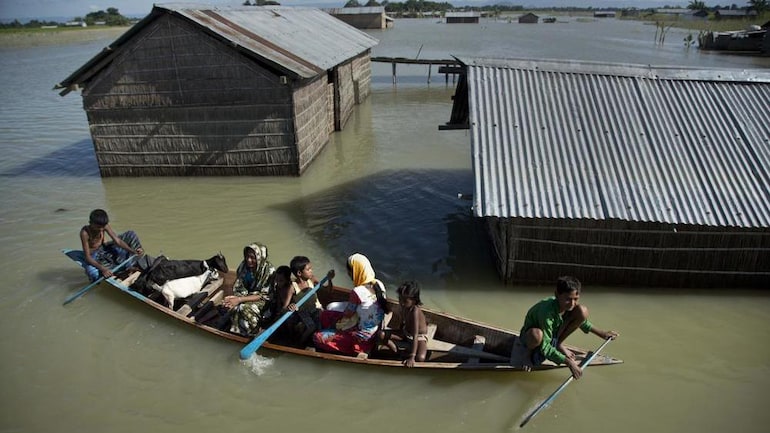According to the newly published Groundswell report, more than 200 million people would have to migrate by 2050 within their own countries and create migration hotspots if effective measures are not taken immediately to control the level of global emissions and make it coherent with the level of development in the world.
Problems such as water scarcity, decreasing crop productivity, and rising sea levels are contributing to the deterioration of the climate to an irreversible state gradually.
It could lead to three different scenarios with varying degrees of climate action and development, resulting in an accumulated amount of “climate migrants” across nations, the report noted.

Accessing the worst-case scenario, the AP News tells of the report that if the level of emissions continues the way it is now, it will lead to the displacement of up to 216 million people within their own countries.
The regions which would have a large impact are Latin America; North Africa; Sub-Saharan Africa; Eastern Europe and Central Asia; South Asia; and East Asia and the Pacific.
However, even in the most positive scenario with emissions going down and healthy sustainable growth, 44 million people still might be forced to leave their homes.
Juergen Voegele Vice President for Sustainable Development, World Bank said in the foreword of the report, “The new Groundswell report builds on the work of the first, modelling three additional regions, namely East Asia and the Pacific, North Africa, and Eastern Europe and Central Asia—to provide a global estimate of up to 216 million climate migrants by 2050 across all six regions.
It’s important to note that this projection is not cast in stone. If countries start now to reduce greenhouse gases, close development gaps, restore vital ecosystems, and help people adapt, internal climate migration could be reduced by up to 80 per cent—to 44 million people by 2050.”
Viviane Wei Chen Clement, a senior climate change specialist at the World Bank and one of the report’s authors, said, “The findings reaffirm the potency of climate to induce migration within countries.”
The report did not focus on short-term results in terms of climate change including the recent extreme weather events and did not focus on climate migration across borders.
Sub-Saharan Africa is the area that would face the worst of the impacts. Desertification, fragile coastlines, and the population’s dependence on agriculture would all put them in a tight situation and would force them to migrate. As a result, 86 million people might be moving within national borders.
However, according to the report, North Africa is expected to have the largest number of climate migrants, with 19 million people moving, equivalent to roughly 9% of its population. The reasons could be the increased water scarcity in Tunisia, northwestern Algeria, western and southern Morocco, and the central Atlas foothills.
Prof. Maarten van Aalst, director of the International Red Cross Red Crescent Climate Centre, who wasn’t involved with the report said, “This is our humanitarian reality right now, and we are concerned this is going to be even worse, where vulnerability is more acute.”
Dr Kanta Kumari Rigaud, a lead environmental specialist at the World Bank and co-author of the report, said: “Globally we know that three out of four people that move stay within countries.”
The report also warns that migration hotspots might start to appear already within the next year and could multiply in a large number by 2050.
According to the report, among other actions achieving “net-zero emissions by mid-century to have a chance at limiting global warming to 1.5° degrees Celsius” and investing in development that is “green, resilient, and inclusive, in line with the Paris Agreement,” would be an important one.
Also Read: US Climate Envoy, John Kerry is on his second visit to India for 2 days